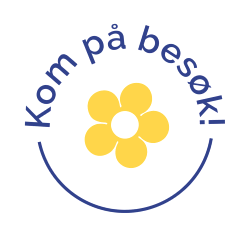Voksne i møte med barn
Gjennom arbeidet med voksenrollen fokuserer vi på selve barnet, og oss som voksne i møte med barnet. Slik at vi som voksne skal være de beste voksne i samspillet med barna vi møter i vår barnehage.
Trygghetssirkelen er et verktøy vi kan bruke for å forstå og møte barnas behov. Trygghetssirkelen er en visuell sirkel, der den voksne er den trygge og sikre havnen. Når barnet er utforskende, beveger det seg ut fra den trygge havnen, barnet er da oppe i sirkelen. Barnet er fremdeles avhengig av voksne i form av støtte, hjelp ved behov og glede med barnet. Når barnet er nede i sirkelen har barnet behov for beskyttelse, trøst, godhet og organisering av følelsene sine (Powell, Cooper, Hoffman, Marvin, 2015).
Trygge relasjoner viser seg å ha stor innvirkning på barna psykiske helse og legger grunnlaget for videre emosjonell, sosial og kognitiv utvikling. For at de voksne i barnehagen skal kunne etablere trygg tilknytning til barna, er de avhengig av å kunne forstå barnet innenifra (Brantzæg, Torsteinson, Øiestad, 2015).
Adults attending to childrens needs
The circle of security is a tool we use to understand and meet the children's needs. The circle of security is a visual circle where the adult is the safe and secure port. When the child is exploring, they move out of the safe port, making it up to the circle. The child is still dependent on the adult in the form of support, help, and encouragement. When the child is down in the circle, they require protection, comfort, kindness, and to organise their feelings (Powell, Cooper, Hoffman, Marvin, 2015).
Secure relationships have a major impact on the child's mental health and lay the foundation for further emotional, social, and cognitive development. For the adults in the kindergarten to be able to establish a safe connection to the children, they depend on being able to understand the child within (Brantzæg, Torsteinson, Øiestad, 2015).





